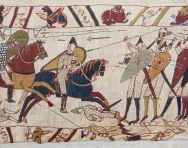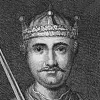Important update from TheSchoolRun
For the past 13 years, TheSchoolRun has been run by a small team of mums working from home, dedicated to providing quality educational resources to primary school parents. Unfortunately, rising supplier costs and falling revenue have made it impossible for us to continue operating, and we’ve had to make the difficult decision to close. The good news: We’ve arranged for another educational provider to take over many of our resources. These will be hosted on a new portal, where the content will be updated and expanded to support your child’s learning.
What this means for subscribers:
- Your subscription is still active, and for now, you can keep using the website as normal — just log in with your usual details to access all our articles and resources*.
- In a few months, all resources will move to the new portal. You’ll continue to have access there until your subscription ends. We’ll send you full details nearer the time.
- As a thank you for your support, we’ll also be sending you 16 primary school eBooks (worth £108.84) to download and keep.
A few changes to be aware of:
- The Learning Journey weekly email has ended, but your child’s plan will still be updated on your dashboard each Monday. Just log in to see the recommended worksheets.
- The 11+ weekly emails have now ended. We sent you all the remaining emails in the series at the end of March — please check your inbox (and spam folder) if you haven’t seen them. You can also follow the full programme here: 11+ Learning Journey.
If you have any questions, please contact us at [email protected]. Thank you for being part of our journey it’s been a privilege to support your family’s learning.
*If you need to reset your password, it will still work as usual. Please check your spam folder if the reset email doesn’t appear in your inbox.
1066: the Battle of Hastings

It might have taken place 950 years ago, but the Battle of Hastings remains one of the most famous battles in English history.
The bloody battle took place on the 14 October 1066. It was fought between William of Normandy and King Harold – the King of England – and it was the English throne that was at stake.
The Normans were victorious, beating the Anglo-Saxons (the English to you and me). King Harold was killed and William of Normandy became King. Norman language and culture then began to influence the country and changed the future of England.
Top 10 facts
1. The Battle of Hastings took place on the 14th October 1066.
2. The battle was fought between William of Normandy and King Harold (Godwinson).
3. William of Normandy was also known as William the Conqueror.
4. William entered the battle with an army of 15,000 soldiers.
5. King Harold had an army of 5,000, and most of the men were farmers, not soldiers.
6. The battle was fought because William of Normandy thought he was the rightful King of England.
7. Hastings is on the south east coast of England, in the county of Sussex.
8. Although we refer to it as the Battle of Hastings, the battle actually took place about 6.5 miles northwest of Hastings at Senlac Hill, now known as Battle.
9. The Normans got to Hastings by boat: they sailed about 700 ships across the English Channel.
10. The English lost the battle and King Harold was killed. On Christmas Day 1066, William of Normandy was crowned King of England.
Timeline
- 5 January 1066King Edward the Confessor dies

- 6 January 1066Harold Godwinson is crowned King of England
- January 1066As news of Harold’s coronation spreads, both William and Harald Hadrada of Norway plan to invade England to contest the throne
- 25 September 1066At the Battle of Stamford Bridge Harald Hadrada and King Harold's brother Tostig are killed
- 27 September 1066William of Normandy and his forces land at Pevensey on the Sussex coast.
- 14 October 1066The Battle of Hastings takes place. King Harold of England is killed and William of Normandy is victorious

- 25 December 1066William of Normandy (the Conqueror) is crowned King of England


Boost Your Child's Maths & English Skills!
- Start your child on a tailored learning plan
- Complete the activities added each week
- Watch your child's confidence grow!
Did you know?
- Many of the people who lived in England at the time of the battle were known as Anglo-Saxons.
- The battle was fought on a hill! The English army started the battle at the top of the hill and the Normans started at the bottom.
- The English were totally outnumbered. They stood in a long line, putting their shields in front of them in defence (this was known as a shield wall). The shields all overlapped each other to provide the best kind of protection from all the Normans' flying arrows!
- The Normans made a winning move when they pretended to retreat. Some Saxons followed them allowing the remaining Norman soldiers to attack the weak points left in the shield wall.
- King Harold was killed by the Norman soldiers. Once they had lost their King, many of the English ran away.
- William of Normandy was apparently knocked off his horse at some point during the battle!
- Starting at dawn and finishing at dusk, the bloody battle lasted for over nine hours.
- William apparently promised he would build an abbey if he won the battle and he did exactly that following his victory. He placed the high altar on the spot where King Harold fell.
- The town of Battle and its abbey have taken their name from one of the most famous battles in English history.
- The Normans were from Normandy, now a part of modern France.
- The story of the Battle of Hastings was put onto a piece of tapestry called the Bayeux Tapestry.
- The Bayeux Tapestry can be found in a museum in Normandy. It’s considered a very important piece of historical evidence as it has a lot of information about the battle on it.
- Some genealogists believe that as much as 25% of the English population is descended from William the Conqueror.
Look at the gallery below and see if you can identify the following:
- Images of the re-enactment of the Battle of Hastings on the battlefield at Battle (2015)
- The ruins of Battle Abbey (Photo Credit: Fanfwa via Wikipedia)
Gallery
About
King Harold hadn’t had an easy time of it as King of England!
He had been crowned on 6 January 1066 following the death of King Edward the Confessor. Edward died without an heir to the throne but on his death-bed instructed that Harold should succeed him. But Edward was half-Norman and William of Normandy was his nephew which is why William believed he was the rightful king and decided to invade (his invasion is known as the Norman Conquest).
The battle which became known as the Battle of Hastings wasn’t the first battle in which Harold was forced to defend his crown; on the 25 September 1066 he’d fought off his own brother Tostig and the Norwegian King Harold Hadrada at the Battle of Stamford Bridge in Yorkshire.
It meant that Harold had already lost men in defeating them. He then had to rush south, gathering reinforcements on the way, to defend his throne yet again! Although Harold’s men were tired, he chose to fight William immediately.
The Normans got to Hastings by boat, sailing about 700 ships across the English Channel.
The famous Battle of Hastings took place on 14 October 1066 and lasted all day long.
The battle took place on a steep hill with the Anglo-Saxons at the top and the Normans attacking from down below.
The Anglo-Saxons were totally outnumbered. William’s army totalled 15,000 men: soldiers, archers and knights on horseback. Harold had only 5,000 men. Some were soldiers and archers, but others were just farmers called in to help. Harold’s men were all on foot, armed with slings, spears and battle axes.
The Anglo-Saxons put up a strong defence. They created a shield wall – they stood in a long line, putting their shields in front of them. The shields all overlapped each other to provide the best kind of protection from all the Normans' flying arrows! Initially this was a winning strategy.
During the battle the Normans believed that William had been killed. In order to prove that he was alive William pushed back his helmet and reportedly said to his men: "Look, I am here, and with the grace of God I will win the day!"
Later in the battle, the Normans pretended to retreat. It was a wise move. Some Anglo-Saxons left the hill to follow them and the shield wall was broken through; the Normans then turned around and attacked. Once the Normans had broken through Harold's ranks they overcame his men easily. Most of the English army were killed where they stood and King Harold was killed by the Norman soldiers and died on the battlefield.
King Harold was either killed by an arrow in the eye or by a sword thrust.
Once they had lost their King, many of the English left standing ran away.
After William became King of England, French became the language of the king’s court. This blended with Anglo-Saxon English and over many centuries became the English language we use today.
The famous Bayeux Tapestry, an embroidered linen cloth which depicts the story of the Battle, shows us information about weapons and architecture of the time, as well as the events of 14 October 1066. The Tapestry is 50cm wide and an amazing 70m long! It was embroidered by English women but made for the Normans to celebrate their victory, so it might not be completely truthful in the way it shows what happened.
Related Videos
Just for fun...
Watch a BBC video about the Bayeaux Tapestry.
Play a Battle of Hastings 1066 game (you'll need at least ten friends!)
Test your Normans knowledge with an interactive quiz
Make a Bayeux Tapestry meme
Watch an English Heritage Events of 1066 animation game and find collectibles, then print a certificate to show off your battle of Hastings knowledge!
How well do you know the facts about 1066? Find out with a Battle of Hastings quiz
Download an instant 1066 Battle of Hasting dress up kit from English Heritage
Children's books about 1066, William the Conqueror and the Normans
Find out more
Watch BBC Bitesize's The Norman Conquest: What happened in 1066?
See a Norman penny with William I's face on it
A guide to the events of 1066 through objects in UK museums
Read about where the Battle of Hastings happened
Join historian Greg Jenner for a BBC Sounds kids' homeschool history lesson on the Battle of Hastings
8 little-known facts about the Battle of Hastings
Read a complete guide to 1066 weapons
The CBBC Newsround guide to the Battle of Hastings
"Meet' King Harold and William the Conqueror and learn about the events leading up to England's most famous battle through an "interview" with them
See for yourself
Visit Battle Abbey and the Battle of Hastings battlefield in East Sussex. In 2016 a special exhibition brings the events of October 1066 to life.
Join English Heritage in commemorating the most famous battle in English history in 1066 anniversary events. The battle re-enactments are spectacular and not to be missed!
The Bayeaux Tapestry is on display in the Bayeaux Museum in France.
Britain's full-size copy of the Bayeux Tapestry is on display in a purpose-built gallery in Reading Museum.


















